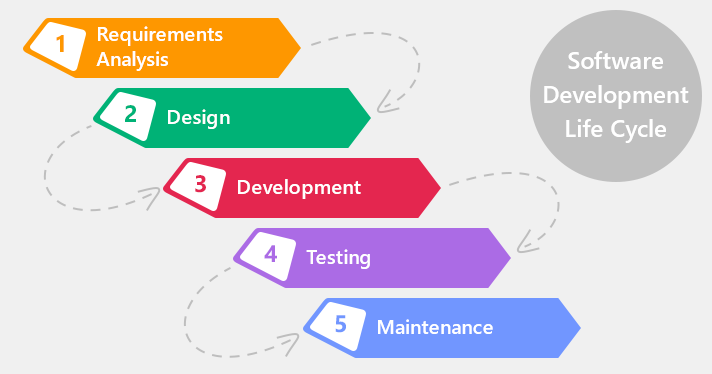- Also called Software Development Life Cycle
- Is a framework that defines the tasks performed at each step in the software development processes
- It is composed by many steps, although there are not officially defines.
- Some of the steps are:
- Communication: The client negotiates with a software developer to agree on the terms of the new software.
- Requirement gathering: The software developers look for information related to the requirements of the client
- Feasibility Study: Find out if the project is financially, practically and technologically feasible
- System Analysis: Understand the limitations and the challenges involved in the software
- Software Design: Design the software and its interface
- Coding: The programming part of the whole software
- Testing: Verifying that the program works as expected
- Integration: Integrating the software with libraries or databases
- Implementation: Installing the software in the user machine and adapting it
- Operations & Maintenance: How the keep the software functional. Make changes when needed
- Disposition: Whenever the software needs an extreme makeover, be able to store the information somewhere
Software Development Paradigm: Strategies used to develop software
- Waterfall Model: The phases of SDLC will function one after the other
- Iterative Model: Repeats every step after every cycle
- Spiral Model: A combination of iterative and waterfall model
- V-Model: Like waterfall model but it is possible to go back is an error is found
- Big Bang Model: If put together lots of time, effort and resources, you create a software


